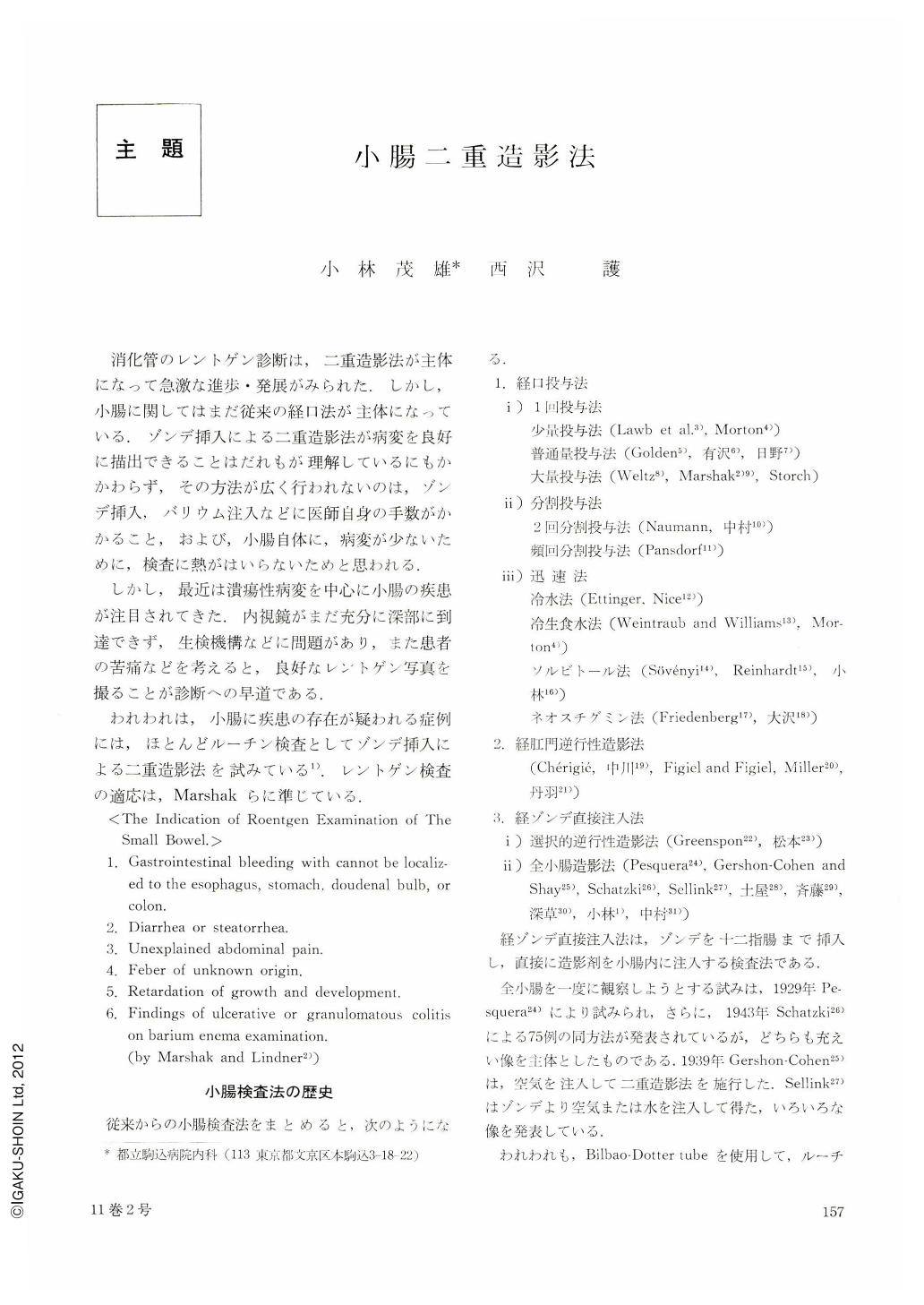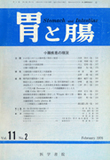Japanese
English
- 有料閲覧
- Abstract 文献概要
- 1ページ目 Look Inside
- サイト内被引用 Cited by
消化管のレントゲン診断は,二重造影法が主体になって急激な進歩・発展がみられた.しかし,小腸に関してはまだ従来の経口法が主体になっている.ゾンデ挿入による二重造影法が病変を良好に描出できることはだれもが理解しているにもかかわらず,その方法が広く行われないのは,ゾンデ挿入,バリウム注入などに医師自身の手数がかかること,および,小腸自体に,病変が少ないために,検査に熱がはいらないためと思われる.
しかし,最近は潰瘍性病変を中心に小腸の疾患が注目されてきた.内視鏡がまだ充分に深部に到達できず,生検機構などに問題があり,また患者の苦痛などを考えると,良好なレントゲン写真を撮ることが診断への早道である.
It is a matter of common knowledge that the conventional barium meal examination is not a sufficient method to visualize and diagnose the small lesion of small intestine. We have investigated the routine double contrast method by duodenal intubation of small intestine, and studied that merits.
Our method is as follows:
1) Insert the tube (Bilbao-Dotter tube) near to the part of Treitz.
2) Inject about 400 ml or 50w/v% barium solution through the tube.
3) Observe the passage of barium to reach to the end of ileum and take radiographs.
4) Inject suitable amount of the air through the tube.
5) Take the double contrast radiographs of the upper part of small intestine.
6) Add the air injected sufficiently to the middle and lower parts of small intestine.
7) Muscle injection of 20 mg Hiyostine-N-Butylbromide (Buscopan).
8) Take the double contrast radiographs of the middle and lower parts of small intestine.
Results of X-ray examination of small intestine by our method are as follows:
1) In the case of normal shape stomach, the mean intubation time was 5.2 minutes, but in the case of deformed stomach, it was 9.6 minutes.
2) Mean transit time was 10 minutes.
3) It took about 30 minutes all through the examination of small intestine radiography.
4) We have studied 50 cases selected at random from all the cases examined by our method.
Good double contrast radiographs were obtained in 100% of the upper, 94% of the middle, 80% of the lower part of small intestine and 60% of the end of ileum.
The causes of failed double contrast radiographs were insufficient amount of air, change in quality of the barium and poor barium coating.
5) Severe stenotic lesion usually did not make good double contrast radiographs.
6) Small lesions appeared clearly in the double contrast radiographs.
Merits of our method are as follows:
1) It takes only 30 minutes all through the examination.
2) It is possible to take double contrast radiographs of all the parts of small intestine.
3) Not only double contrast but also barium-filled radiographs are taken. It means that this method contains the merits of the conventional barium meal examination.
4) Small elevated or depressed lesions appear in the radiograph clearly.
5) Injection of Hiyostine-N-Butylbromide visualizes clearly the contour and mucsoal pattern of small intestine.
6) It is possible to take the double contrast radiograph following routine upper gastrointestinal barium meal examination.

Copyright © 1976, Igaku-Shoin Ltd. All rights reserved.


